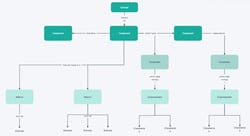Concept Map vs Mind Map – 5 Differences You Should Know
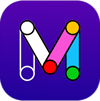 Wondershare Mockitt Map Diagram Maker
Wondershare Mockitt Map Diagram Maker
Build concept maps and mind maps to explore and organize your ideas graphically. Mockitt makes it easy for everyone to create concept map in word with simple clicks. Give it a shot!
People seem confused about the difference between concept maps and mind maps and often think they are the same. There is confusion between these two maps due to their similarities and also because they both serve the same purpose of organizing information. But it must be noted that concept maps and mind maps have distinct functions.
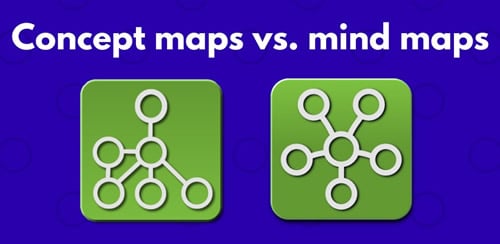
We will now take a closer look at what they are and how they differ from each other in terms of their benefits, visual structure, and usability.
- Part 1. Concept map vs mind map: definition difference
- Part 2. Concept map vs mind map: benefits difference
- Part 3. Concept map vs mind map: visual structure difference
- Part 4. Concept map vs mind map: usability difference
- Part 5. Concept map vs mind map: type difference
- Part 6. Create a concept map/mind map with Wondershare Mockitt
Part 1. Concept map vs mind map: definition difference
Concept Map: A concept map is also known as a conceptual diagram that illustrates possible relationships between concepts. Technical writers, instructional designers, and engineers use it as a graphical tool for organizing and structuring their knowledge.
Mind Map: A mind map is a diagram that is used to organize information visually in a logical way. The mind map is a hierarchical diagram where the relationships among pieces of information are shown as a hierarchy. Often, it is created around a single concept, drawn as an image in the center of a blank page, with associated images, words, and parts of words added. A central concept connects major ideas, and they branch out from there.
One wouldn't notice many differences between the two techniques simply by looking at their definitions. A mind map depicts connected ideas and perceptions of a central topic or subject. In contrast, a concept map presents relationships between concepts in a diagram.
Here is a visual difference-
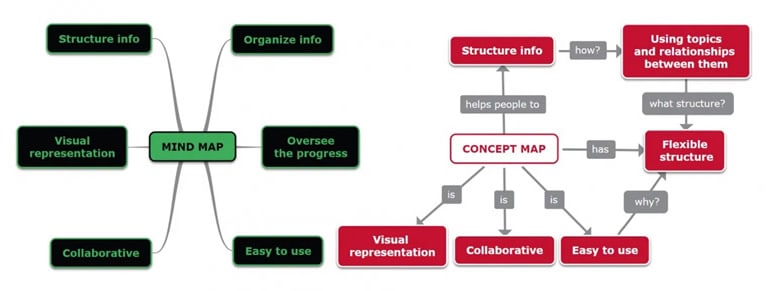
Part 2. Concept map vs mind map: benefits difference
Now that you know what they are, let us examine the benefits of concept maps and mind maps. The concept map is a representation of knowledge, which shows the relationships between various subjects and their concepts. In contrast, mind maps establish concepts such as advances in thinking that can make universal programs more competitive.
Benefits of Concept Map
When it comes to creating and visualizing concept maps, they offer several advantages. The following are some benefits of using concept maps:
- It encourages you to think creatively and innovatively.
- It aids in memory retention and lexicon development.
- They can be used for brainstorming, training, and official documentation.
- A large amount of information is conveyed clearly and understandably.
- Using them, you can visualize a topic holistically and comprehensively define its relationships.
Benefits of Mind Map
There is no doubt that mind mapping is a popular way to organize, present, and record information. The following are some of the major benefits of mind mapping:
- A mind map is easily adaptable due to its similarity to the human brain. In the same way our brains develop, they grow from a central topic and become radiant.
- Mind maps can be used to organize ideas creatively in a learning or work environment.
- There are no limitations to how mind maps can be expanded in theory, making it easy and convenient for them to be extended at any time in the future.
- With them, you are free to use images and symbols in any way you wish. Memorizing things becomes easier with this free space.
- A mind map can condense a great deal of information because its topic text consists of important words and phrases that summarize the idea at hand.
Part 3. Concept map vs mind map: visual structure difference
Concept maps look more doubtful and complicated than mind maps, which are generally tree maps. There are several spotlights on different elements and components. The concept map values both topics and associations. Mind maps, however, focus more on the subject itself. Therefore, understanding concept maps vs. mind maps is essential.
When viewed carefully, concept maps seem to clarify why individual hubs are associated with each other all the more clearly. On the other hand, the mind map is a superior choice when you need to write down as much information as possible.
There is the possibility of cross-connection between concept map topics. However, topics on a mind map cannot be changed. Look at the picture given below to understand the visual structure difference between mind maps and concept maps.
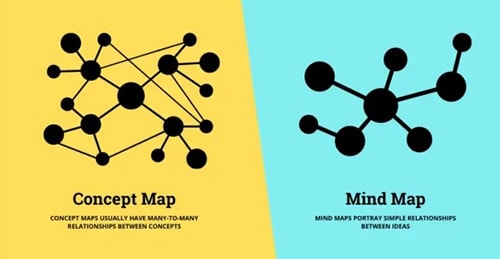
Concept maps typically contain three major features:
- Structure with no rigidity: The layout of concept maps is flexible and there are many branches to choose from.
- Structure-based on hierarchy: Concepts or items are arranged from the most general to the most specific, following a top-down approach.
- Structure of a proposition: There is a cross-linking of concepts using prepositions and phrases.
There are two major features of a typical mind map:
- Subtopics are arranged in a radial pattern around a central idea.
- With many one-to-one relationships among its subtopics, it has a simple layout.
Tips You Should Know
Wondershare Mockitt
Map Diagram Maker >>
Part 4. Concept map vs mind map: usability difference
A concept map or mind map can be used depending on the complexity of the problem. Concept maps are more feasible in complex problems or strategies that need to be formulated instantly. You will be able to identify each option's potential advantages and disadvantages by looking at the sub-branches of the conceptual model.
Only one aspect of the macro environment is explored in this small simulation. Mind mapping is the ultimate choice if you have a tactic issue that cannot be analyzed in a big-scope map. You can also highlight the keywords using the graphical tool to better understand the issue. Let's look at an example of a concept map and a mind map to help you decide which map to use and where.
Example 1- An ecommerce system
This example illustrates the relationship between each section of the E-commerce process. For example, the creation of strategies from the perspective of products, marketing, pricing and sales channels, as well as the construction of the website, is much more complex and difficult. From team negotiations to the final product, the business plan represents the progress of the project.
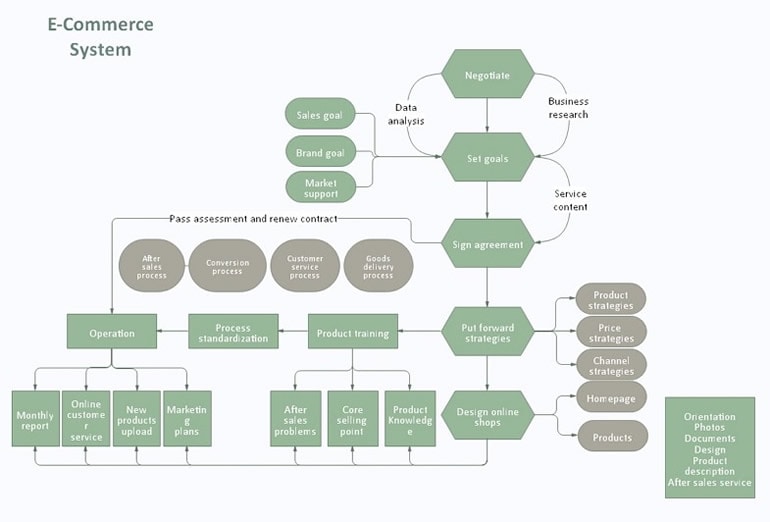
Example2- A marketing plan
In order to gather ideas from the entire marketing team, the mind map is the best tool. According to this example marketing plan, there are mainly three steps: setting goals, making strategies, and making practical plans.
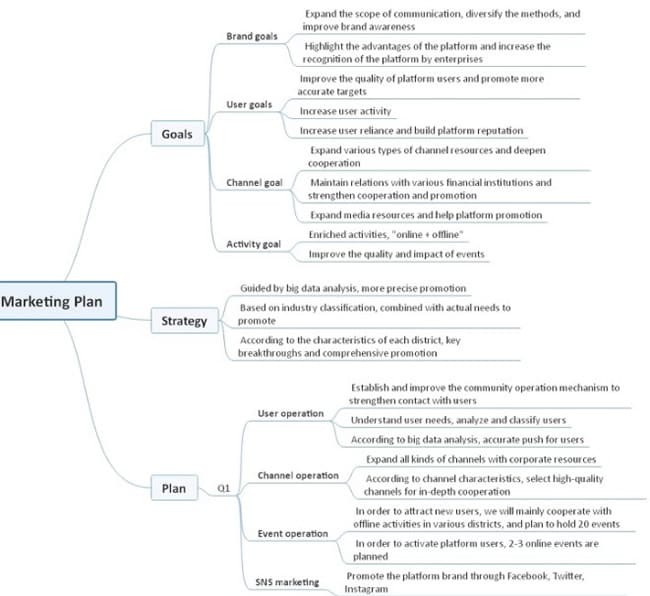
Part 5. Concept map vs mind map: type difference
Now that we know what mind maps and concept maps are and how they can help us. Let's take a look at the types of mind maps and concept maps.
Types of concept maps
In order to create a concept map, different structures and formats can be used. There are four types most commonly used:
Spider maps: Spider maps start with a key concept and branch out into related ideas.

Flowcharts: The flowchart visualizes a process by showing the steps.
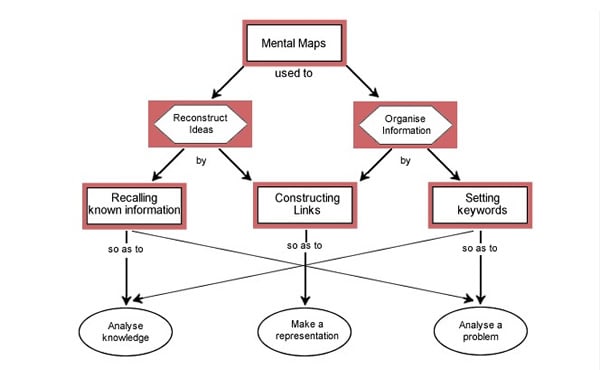
Hierarchy maps: The concept of hierarchy maps is familiar to anyone who has worked on a family tree.
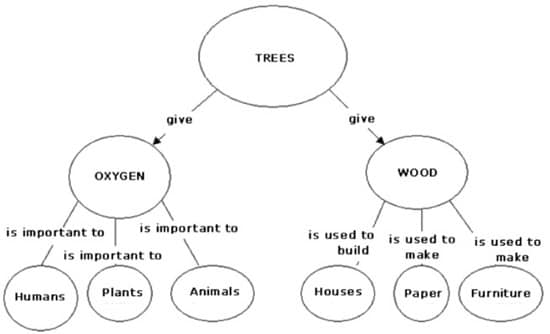
System maps: System maps combine these things to show how components of an organization interact.

These four structures can be used to map almost anything.
Types of Minds Maps:
The purpose of mind maps is to analyze a subject or solve problems early in a project. Mind maps can be classified into 3 types based on their purposes:
Library Mind Maps: You can use this type of mind map to organize information to gain a clear and visual understanding of the subject.
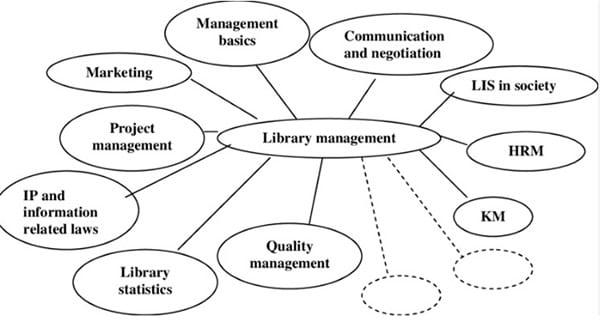
Presentation Mind Maps: Mind maps of this type are used to present the process of an idea. Using presentation mind maps, you can track the steps of a project.
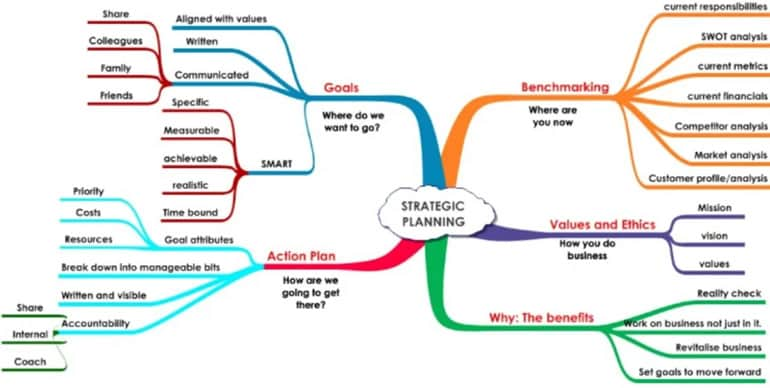
Tunnel Timeline Mind Maps: Generally, these types of mind maps are used to plan projects, programs, and solve problems.
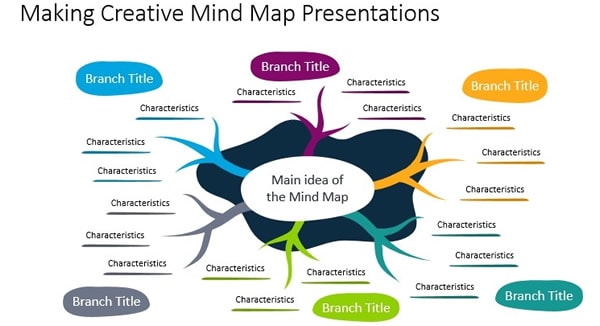
Part 6. Create a concept map/mind map with Wondershare Mockitt
Finally, you have an understanding of the mind map concept differences and how you can use them to organise information. Let's look at how Wondershare Mockitt can help you create concept maps.
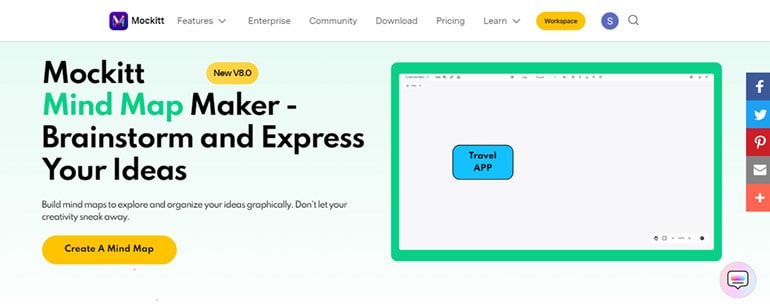
The Wondershare Mockitt tool is an easy-to-use tool that helps you scale your design thinking process. Further, this tool assists you in visualizing your ideas in a more effective way and enhances your productivity as a result. The best thing about Mockitt is that it doesn't require installation. The process of creating a concept map online can be completed within a few clicks.
Here are some of the features of Wondershare Mockitt:
- You can easily design interactive prototypes with it.
- It allows you to create flowcharts, conceptmaps and mind maps online in just a few minutes.
- It allows you to collaborate with your team and come up with amazing UX and UI designs.
Are you looking forward to using Mockitt? If yes, then the following steps will guide you through the process of creating a concept map with Mockitt.
Step 1: First you need to search for Wondershare Mockitt and register. Then click on create mind map icon on the screen.
Step 2: Your concept map will be processed within seconds. After which you can easily edit it and add your own content. It can be enhanced with color, images, and symbols.
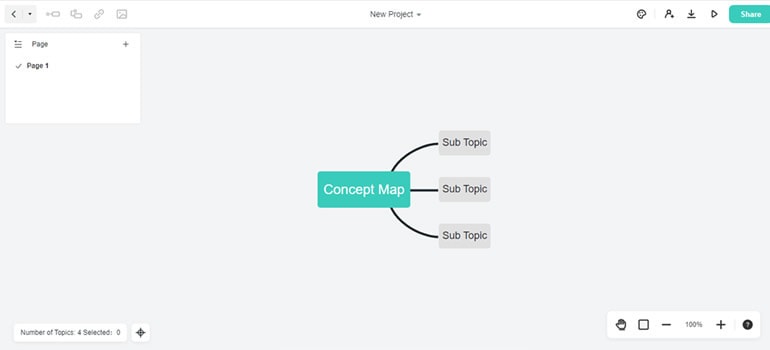
Step 3: After creating your concept map you can easily export it in PDF, PNG, JPG, and HTML formats after it has been created.

Conclusion
We hope this guide will answer all your questions about the differences between concept maps and mind maps. For an easy-to-use, quick mind map and concept map maker, Wondershare Mockitt is the best choice. This platform is not only affordable but also provides you with a variety of widget options.
